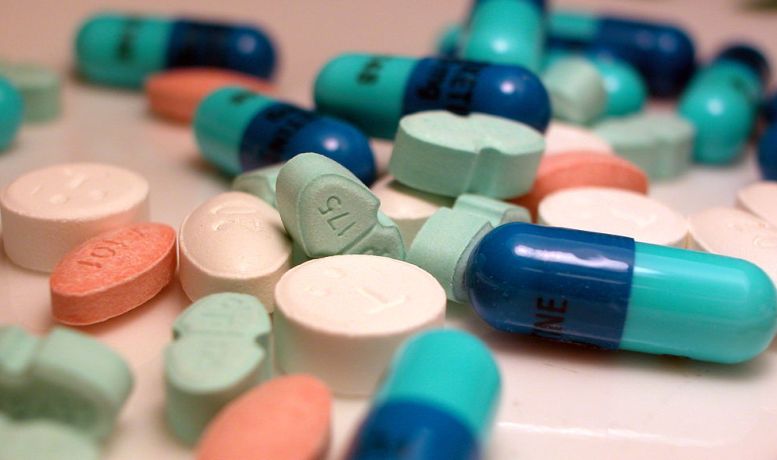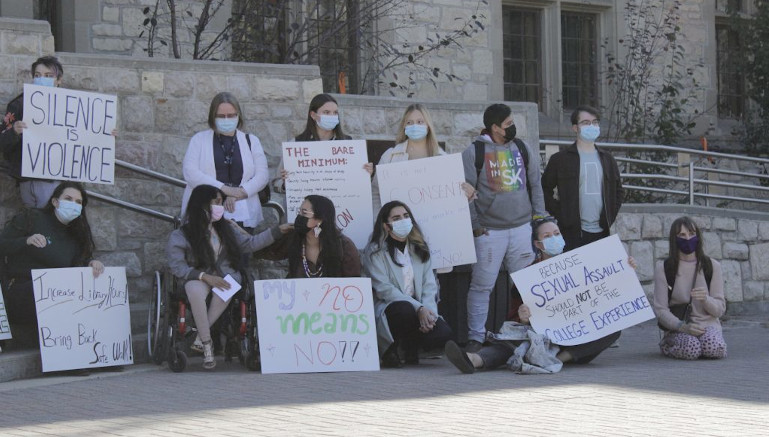Manus Lenihan is a member of Socialist Alternative in the US.
Drug shortages are being reported around the world. This article focuses on the US, but there are similar problems in Canada, both with over the counter medications and prescription drugs.
Many pediatricians say they can’t remember seeing so many kids this sick at the same time. There are shortages of the antibiotic amoxicillin, generics of the influenza drug Tamiflu, and children’s Tylenolat a time when pediatric illnesses and respiratory infections surge in a “Tripledemic.”
These are far from the only drugs currently in short supply — there are also worrying shortages of diabetes injectable Ozempic and labor-inducing drug Pitocin. Many people are currently suffering under the weight of an ADHD medication shortage that was first announced by the FDA in October, though pharmacies were reporting shortages of Adderall beginning in the summer.
Lack of access to medication is deadly. And this is far from the first time a medication shortage has harmed working people and their families. In 2011, AP published a report which found at least 15 deaths in the preceding 15 months that were caused by drug shortages. That year, a norepinephrine shortage was associated with a 3.7% increased rate of in-hospital mortality. The shortage may have been associated with hundreds of excess deaths.
Data shows that there were 260 active drug shortages at the end of September 2022, but new shortages have been added as of early 2023. This isn’t even the all-time high for drug shortages; 282 active shortages were reported during Q2 of 2019, and in 2012, the FDA listed 456 drugs that were in short supply or no longer available. This is nothing new for the pharmaceutical industry, but it presents a mounting threat for ordinary people as the broader crisis of public health escalates.
The Problem is at the Source
Leaving drug manufacturing decisions in the hands of pharmaceutical companies (instead of democratic control by healthcare providers who know what their patients need and will need) has proven time and time again to be a disaster.
Here’s just one fatal example: Four years ago, Vincristine, a critical chemotherapy drug key to treating a variety of childhood cancers, became scarce due to “manufacturing delays.” The shortage of the drug was a nightmare situation for healthcare providers, patients, and their families. There is no alternative treatment.
At the beginning of 2019, both brand manufacturer Pfizer and generics manufacturer Teva Pharmaceuticals had been producing Vincristine. In March 2019, Teva discontinued production of their generic, claiming it only made up 3% of the market share and they could make more money producing other drugs. When Pfizer — now the only manufacturer — encountered manufacturing delays, there wasn’t enough of the drug to go around, forcing pediatricians to choose which children they had to let die.
How heinous is it that corporations that make these cold, calculated business decisions are also in charge of producing life-or-death treatment for sick children? This is because Big Pharma, and the healthcare industry as a whole, are solely driven by their hunger for profit. It simply costs them less to discontinue manufacturing a drug completely if it isn’t making them enough money, no matter if working people will suffer, and even die, because of it.
Although less dire, the current ADHD shortage is a similar tale to that of Vincristine — Teva Pharmaceuticals is also the biggest seller of Adderall in the U.S., bringing in up to $565 million in revenue from Adderall alone. Several doses of Teva’s brand and generic Adderall are expected to stay on backorder through March. According to Teva, the problems are associated with “packaging capacity constraints.” And despite there being several other Adderall manufacturers, the supply isn’t enough to meet the need because of limits placed on how much of the medication can be produced by a single manufacturer.
Expecting parents also face trouble with the shortage of Pitocin, a drug used to induce labor as well as to control bleeding from postnatal hemorrhages. Only two major manufacturers supply this synthetic hormone, so when one of the top two suppliers reported “manufacturing delays,” the chain of events had already long been set into place. This is because these manufacturers have no actual ability, or intent, to control their production of the drug, despite monopolizing it.
The entire industry is complicit in these shortages. There is zero logic in keeping the manufacturing of anydrug to one or two suppliers when history has shown that these problems repeat themselves; this will be the fourth consecutive year where there is an Adderall shortage, and the Pitocin shortage is not just a recent phenomenon, but has in fact recurred over the last few years.
Big Pharma’s Cost-Cutting Crimes
Pharmaceutical companies do not produce drugs in bulk, to be stored and saved for later; instead they use just-in-time (JIT) production, a production model where products are created to meet demand, not created in surplus or in advance of need. JIT, developed in the 1970s, was a key part of the process of neoliberalism and globalization, as part of the drive to maximize profits while shaving production costs down to the bare minimum. The core idea is that manufacturers do not hold supplies of parts and raw materials. Instead, these are delivered just in time for when they are to be used.
But the ubiquity of just-in-time production makes the availability of products extremely vulnerable to disruptions. JIT requires that everything run perfectly; suppliers must be reliable so materials arrive on time. Where product is stored, there must be accurate monitoring of stock so no component runs out. It also requires that delivery routes be accessible, which can become more and more difficult as supply chains have expanded into complex worldwide networks.
While just-in-time production worked to bulk up the profits of major manufacturers, recent years have highlighted more clearly than ever what a disaster it has been for society as a whole — and not just due to COVID.
In the pharmaceutical industry, JIT requires manufacturers to forecast demand accurately. These corporations, with their main orientation toward profit and not the welfare of human beings, are poorly equipped to adequately forecast demand. With no emergency stockpiles, if something disrupts the supply chain, the shortfall can’t be made up quickly — but as always, its ordinary people, not the CEOs, who suffer the most.
Not only are corporations not equipped to predict, much less manage, disruptions to just-in-time-production — they also create disruptions by constantly cutting corners.
In 2009, Teva Pharmaceuticals paused production at a California facility after the FDA found problems with a variety of safety measures. In 2021, they halted production at the facility again after the FDA found the company had not repaired water damage at the site and had not maintained procedures to keep workers from spreading mold and bacteria. 2.5 million vials of injectables for cancer, arthritis, schizophrenia, and more had to be recalled due to possible mold contamination.
Unsanitary conditions and improper manufacturing methods have caused numerous drug recalls, but cutting corners isn’t limited to Big Pharma. It was unsanitary conditions and negligence that lead to the still-ongoing baby formula shortage that began in 2022.
In September 2021, the FDA received a report that an infant was hospitalized with the bacteria Cronobacter sakazakii after having consumed formula produced by Abbott Nutrition. The agency’s inspection of Abbott’s Sturgis, MI plant found instances of standing water and noted that personnel working directly with infant formula did not thoroughly wash their hands. Their report states that Abbott did not maintain their facility in a clean and sanitary condition.
But it wasn’t until February 2022 that the FDA received environmental samples that found evidence of the bacteria at Sturgis — that’s five more months of production of potentially contaminated products. The agency requested Abbott issue a “voluntary recall” of several products, and production was paused at the plant on February 15, though having no other way to produce specialty formulas at any of its other facilities, the company continued to produce products at Sturgis “given the critical access need.” Notably, Abbott did not actually issue a recall of the potentially contaminated formula until the FDA asked for the third time! And with production at the Sturgis plant halted again in June 2022 due to flooding, the supply of baby formula in America still has not caught up and is expected to persist into spring 2023.
From the meat packing industry, to baby formula production, to pharmaceuticals, keeping facilities safe and sanitary just costs too much (if you ask the bosses). Companies don’t care about their employees or the people who need their products; they care about their profits. Forking up occasional workers’ compensation and class action settlements costs less than investing in proper training and equipment — and it even costs less than recalls and production shutdowns.
Big Pharma’s M.O.
Even without shortages and recalls, the pharmaceutical industry is perfectly capable of sowing fatal chaos under normal circumstances. More than 100,000 Americans died from diabetes for the second straight year in 2021, partially due to soaring insulin prices. For over 14% of Americans who use insulin, the costs consume at least 40% of their available income. And for people with multiple sclerosis, prices for treatment continue to skyrocket, causing a greater burden for people who already live with a life-altering condition. The annual median price for MS DMTs (disease-modifying therapies) has increased by nearly $34,000 in less than 10 years.
Under the “free market” of capitalism, drug manufacturers are the ones who set the price of a drug. It isn’t just the work of villainous caricatures like Martin Shkreli, who increased the price of a prescription medication used to treat parasites from $13.50 per pill to a whopping $750 per pill in 2015. EpiPens, which are needed by over 3 million Americans, cost $650–700 if you’re paying cash. Because of manufacturer Mylan’s monopoly on the market, they can do anything they want and suffer no consequences.
If people need medicine, they will do whatever it takes to get treatment, including accruing mountains of debt. $88 billion of outstanding medical bills are currently in collections, according to the Consumer Finance Protection Bureau. Meanwhile, the revenue for pharmaceuticals was over $1.42 trillion in 2021: that revenue could wipe out America’s medical debt 16 times over.
We Need a Socialist Solution
Shortages, recalls, and price gouging are typical for Big Pharma. But the entire healthcare system is predatory. Roughly 30 million Americans were uninsured in 2021: that’s around 9.2% of the population. Yet that same year, the United States spent an estimated $12,318 per person on healthcare — the highest healthcare costs per capita across OECD countries, despite ranking last “in a measure of healthcare access and quality, indicating higher rates of amenable mortality than peer countries.”
Healthcare in America is like any other industry under capitalism — run for profit. It is not run to provide services to meet basic human needs if those services can’t be sold at a rate of profit that satisfies shareholders. The insurance, pharmaceutical, and privatized healthcare industries are all sustained by the misery and sickness of the poor and working class. We cannot choose whether we get sick or whether we are born with a health condition. Life should not be a gamble that is taken before someone is even born, yet under the American healthcare system, under capitalism — the game, for the majority of people, is rigged from the start.
Now more than ever, as pharmaceutical shortages bleed into 2023, the working class, young people, LGBTQIA+ people, and every marginalized community must fight even harder for Medicare for All. Beyond that, we must fight for all the branches of the for-profit healthcare system to be taken into public ownership and run democratically in the interest of patients, healthcare workers and the public at large.
However, to ultimately provide a planned healthcare system that works for everyone — with cheap and accessible drugs, decent working conditions for staff in both the pharmaceutical sector and the rest of the healthcare sector, and fully funded social services — requires doing away with the entire profit-driven capitalist system. A socialist world free of capitalist greed and unnecessary suffering and death is possible; only the working class can bring it to fruition.




